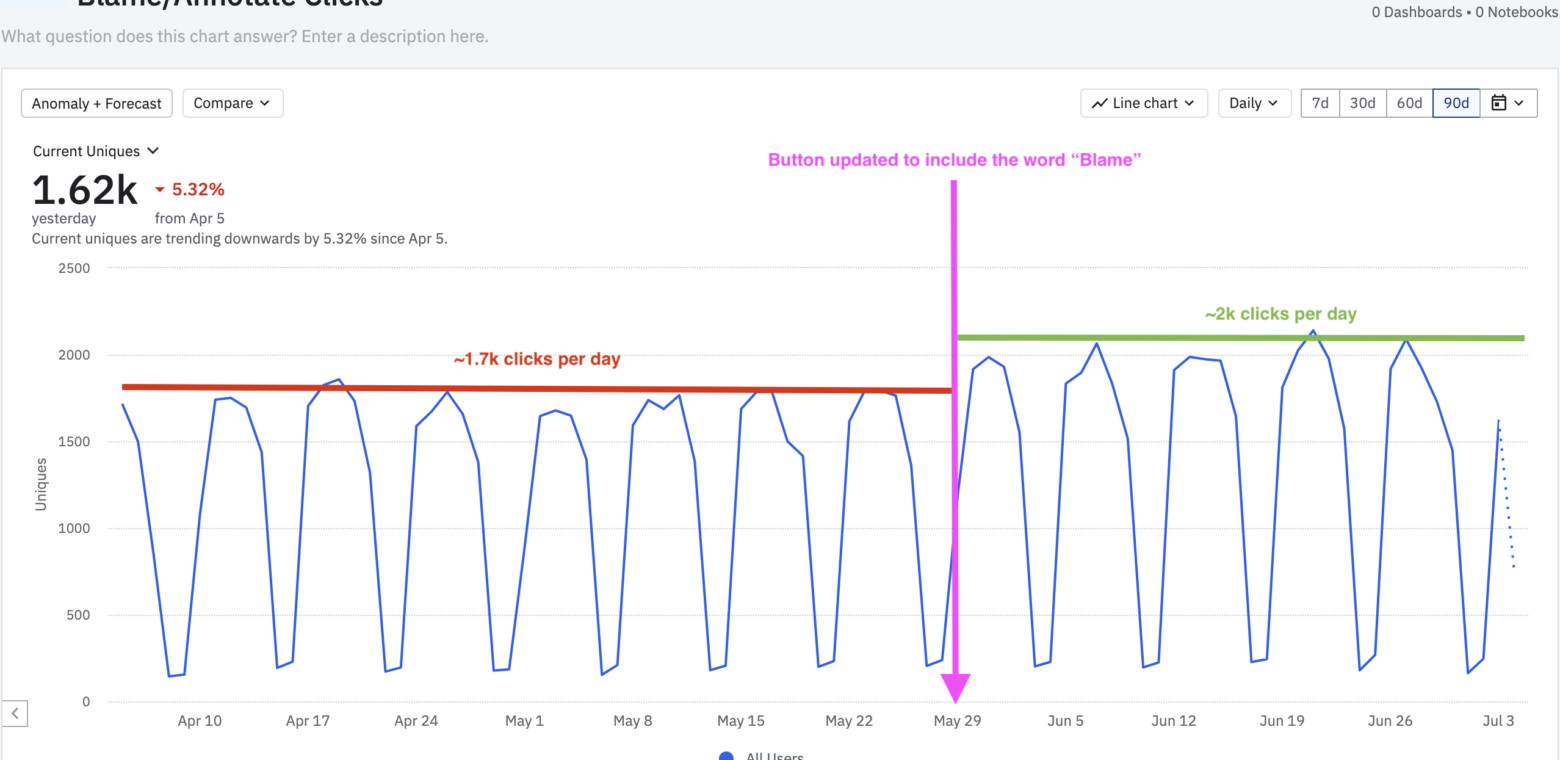We are making git blame feature more discoverable on the Bitbucket Cloud UI.
A very useful feature of git, git blame has been available on the Bitbucket Cloud UI for years. Similar to how git blame works with git, on Bitbucket Cloud it annotates each line in the given file with information from the commit which introduced the line.
Through our internal research we have recently found that some of our users are not aware of this feature being available on the Bitbucket Cloud UI because it is triggered with a button called Annotate. For it to be more clear that this button performs the git blame functionality, we have renamed the button to Annotate/Blame.
Anotate/Blame functionality on the source view of a file.Anotate/Blame functionality on the annotated source view of a file.Why two names?
There are two very similar commands available with git, git blame and git annotate. Both of them annotate each line in the given file with information from the revision which last modified the line. The documentation of the latter explains why both of these commands exist:
"The only difference between this command and git-blame is that they use slightly different output formats, and this command exists only for backward compatibility to support existing scripts, and provide a more familiar command name for people coming from other SCM systems."
Indeed, as source control management (SCM) systems evolved over time, these two terms were used interchangeably to describe the same functionality. Bitbucket Cloud UI has until recently only referred to this functionality with the term annotate. For users who were accustomed to the blame terminology, it was not immediately clear that the Annotate button would perform the git blame operation.
Why it matters?
Since we introduced the changes, we have seen 15% increase in the feature usage. This means more users are now able to avail of a feature that is already readily available in our product.
